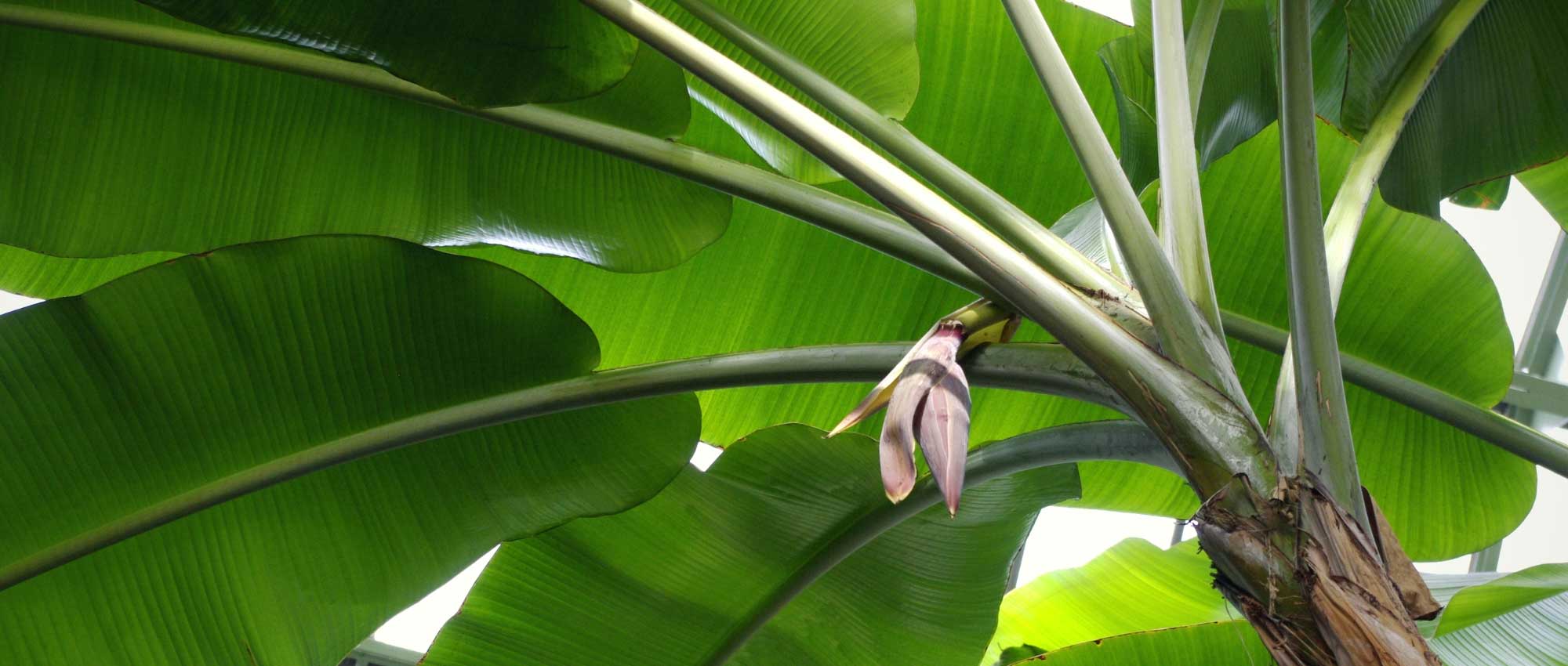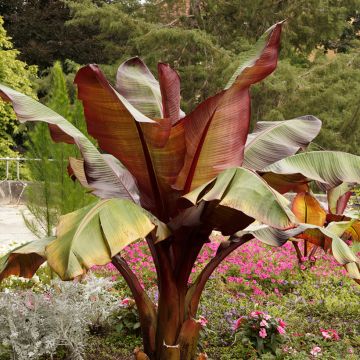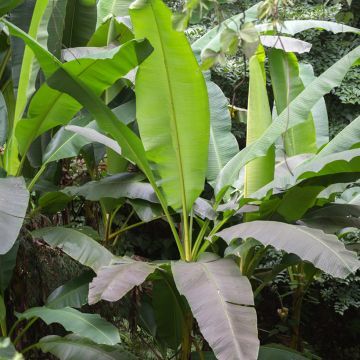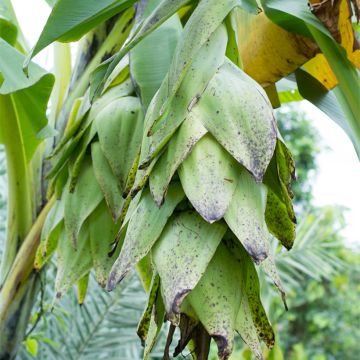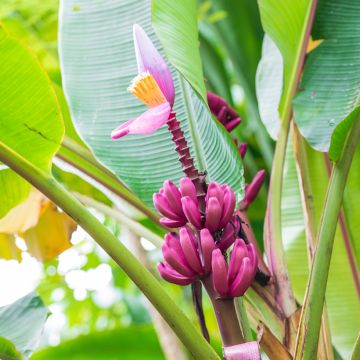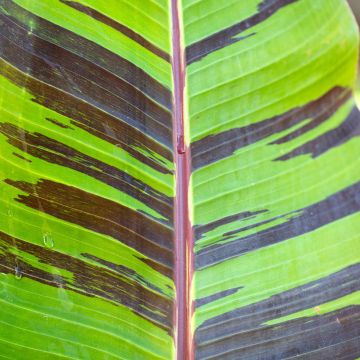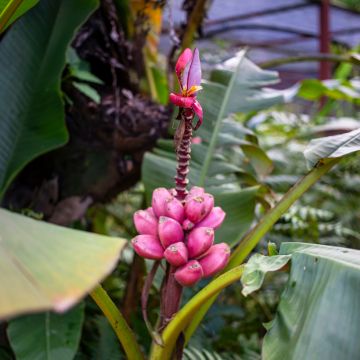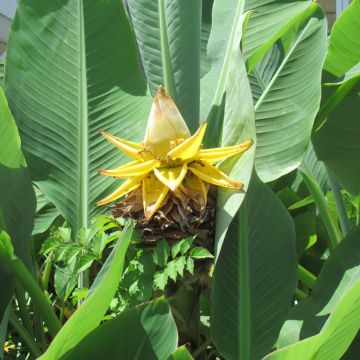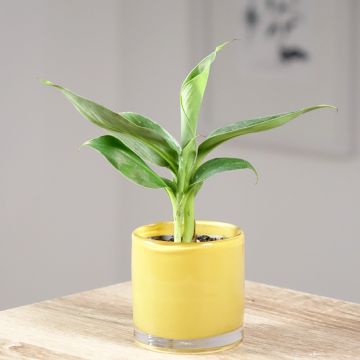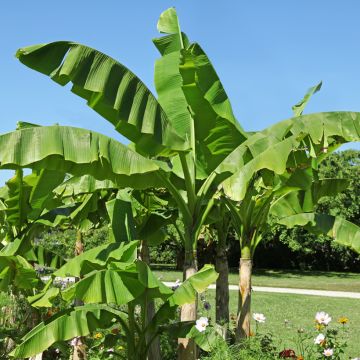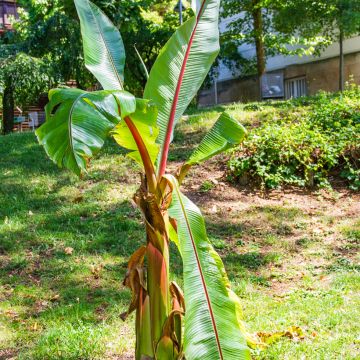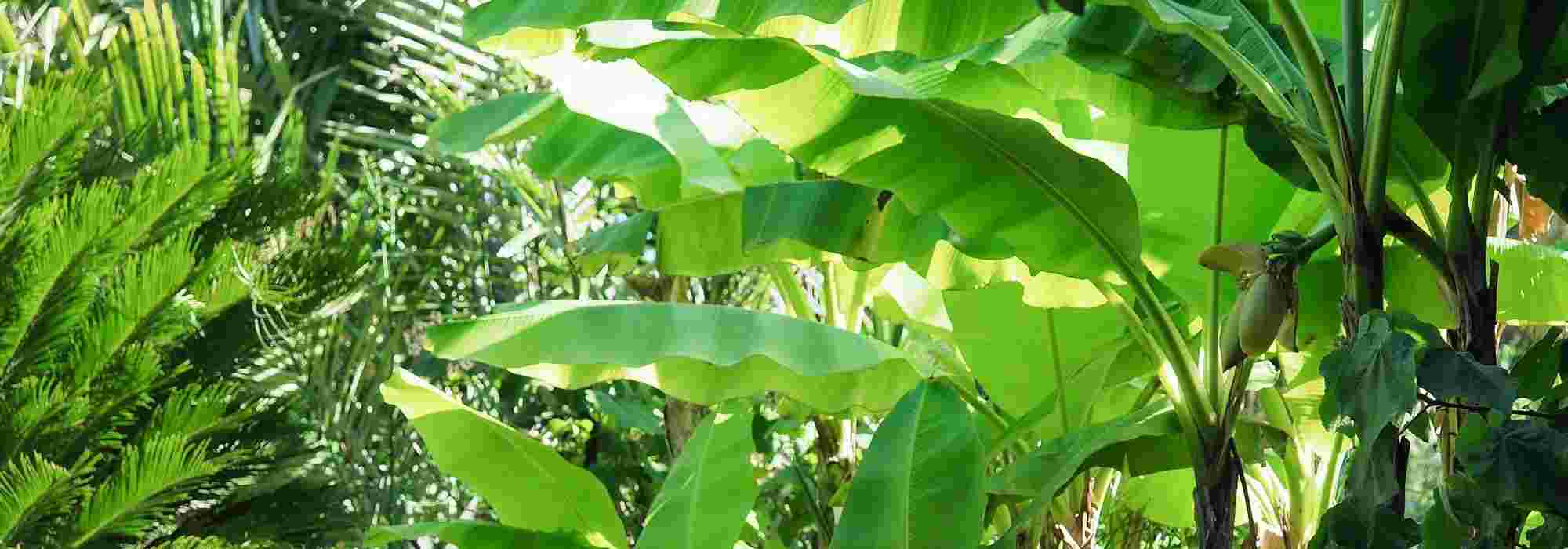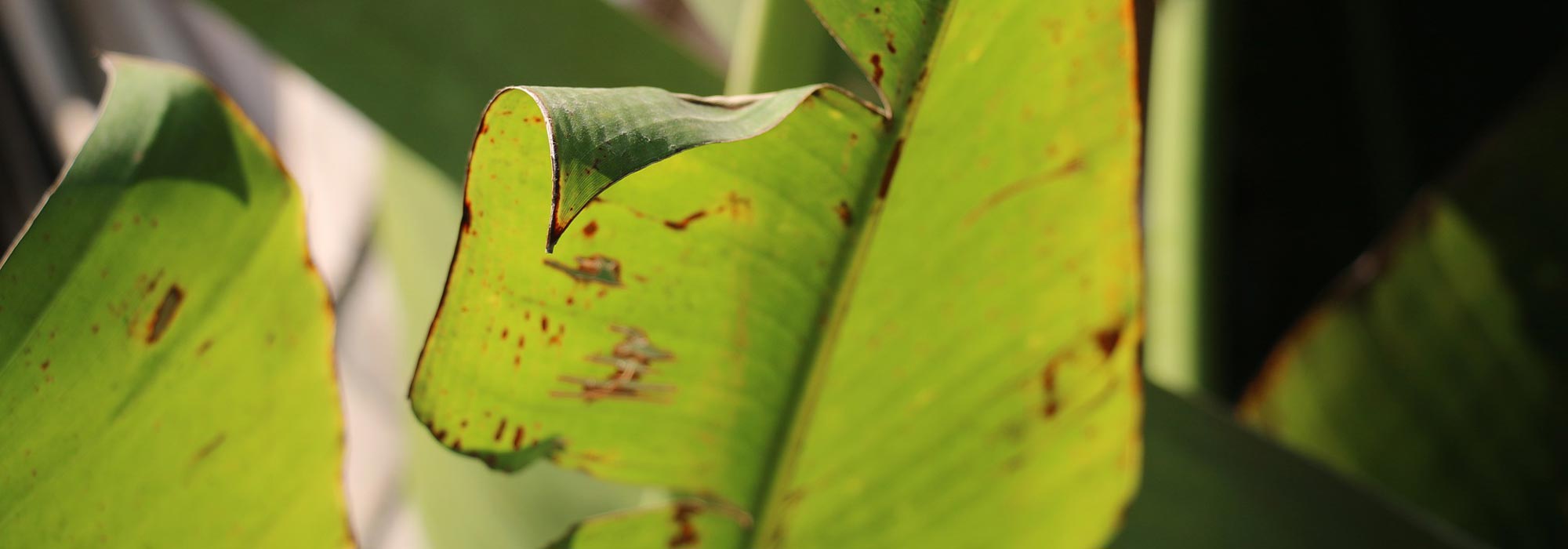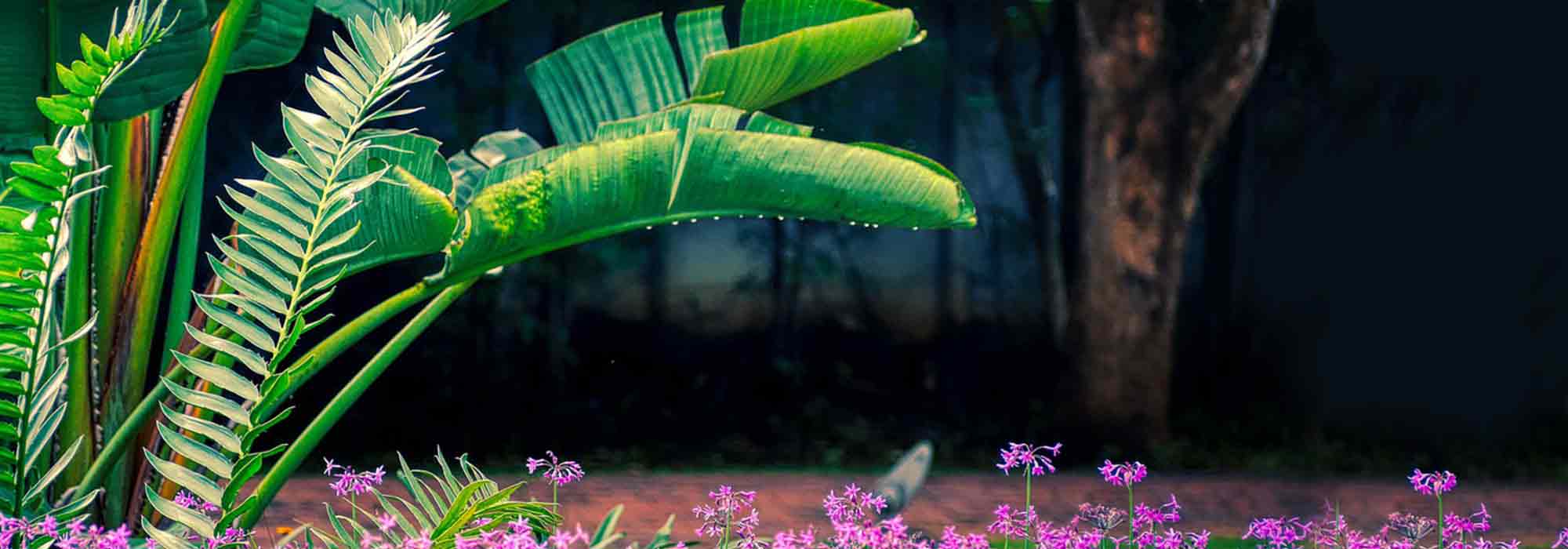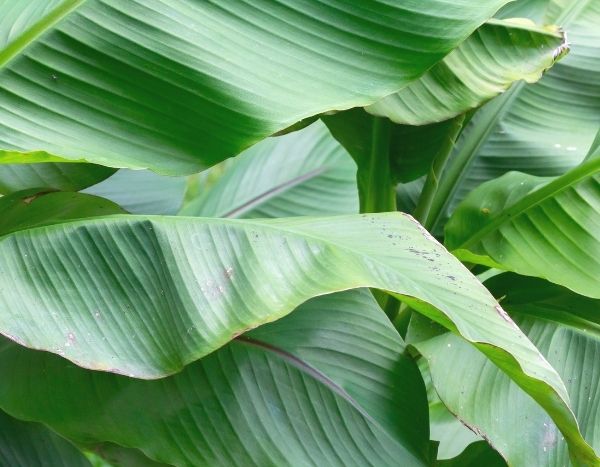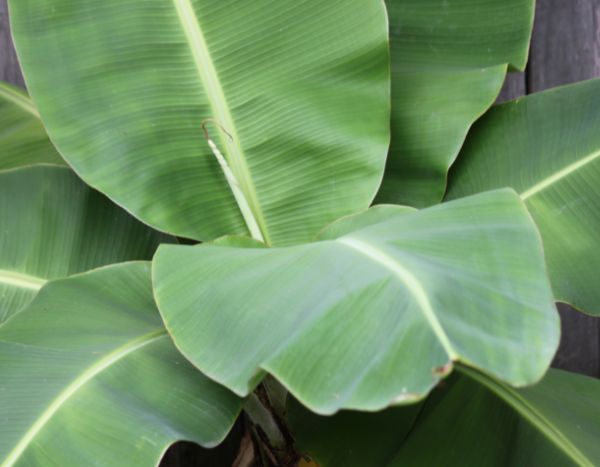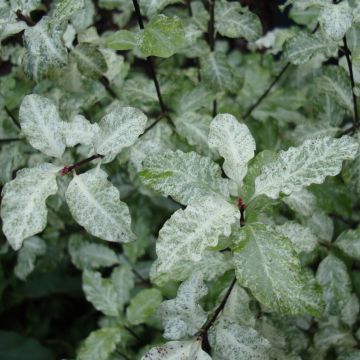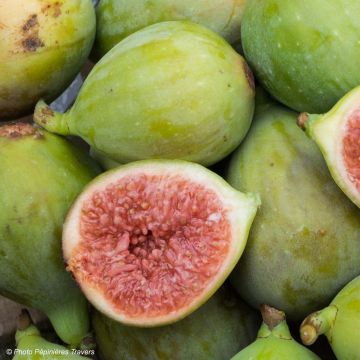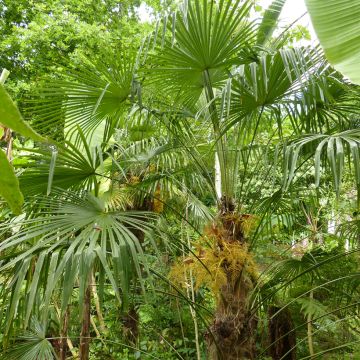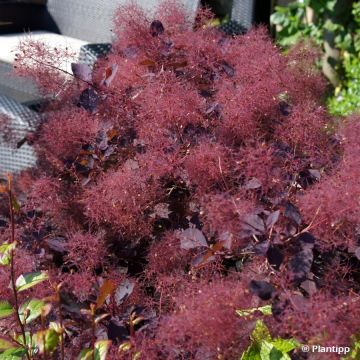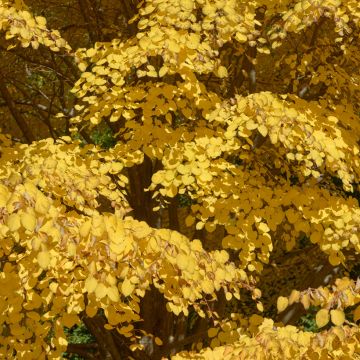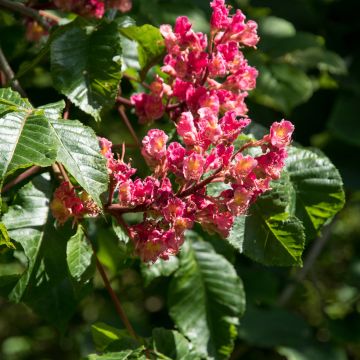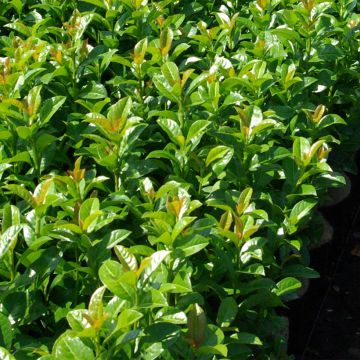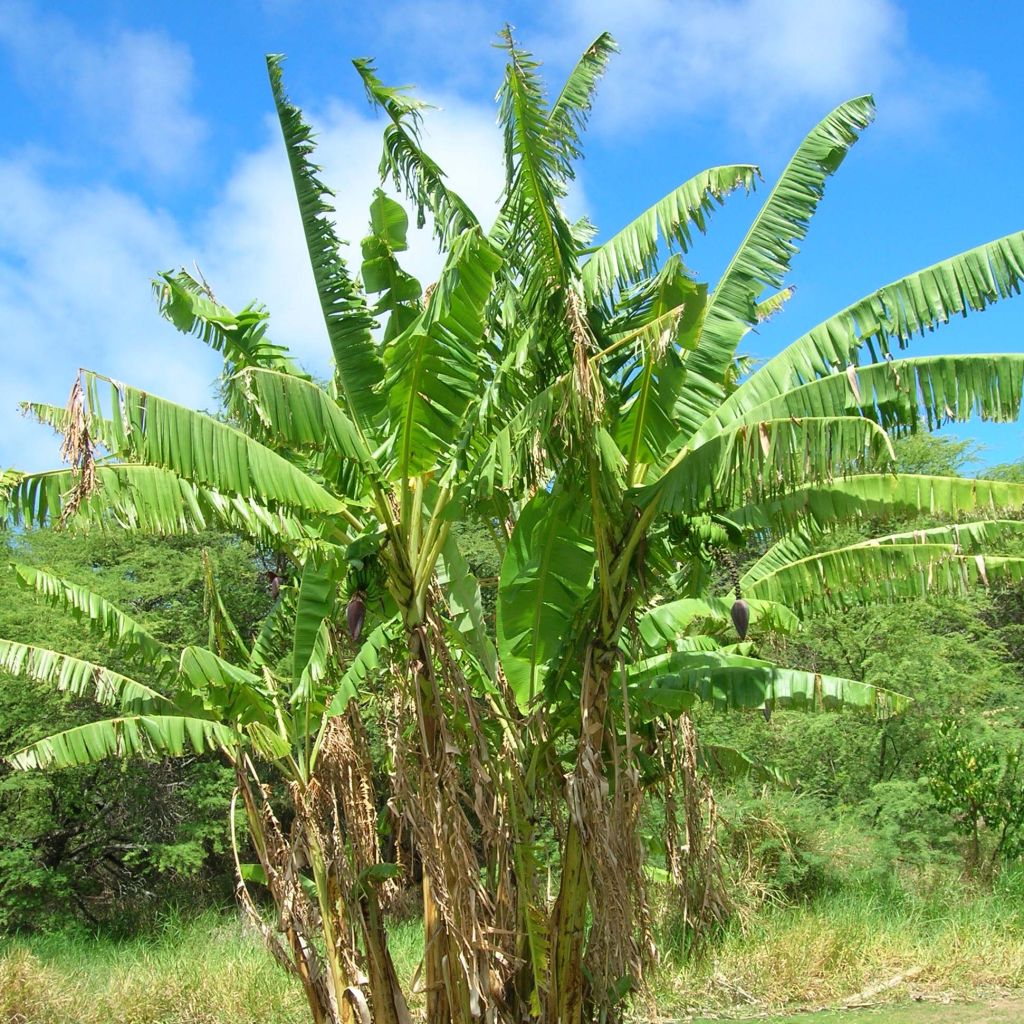

Musa itinerans Mekong Giant - Bananier voyageur.
Musa itinerans var. xishuangbannaensis Mekong Giant - Hardy Banana
Musa itinerans var. xishuangbannaensis Mekong Giant
Mekong Giant Hardy Banana
I would have loved to receive this vine-plant that I ordered, but I was told that it was of too poor quality for me to receive it, so I'm asking if it's possible to reserve one for later. I'm told it's not possible... 10 days later, it's available on the website, but not available for purchase as it's already out of stock. I've been waiting for my banana plant for 2 years. I had set up alerts for the young plants, but it's not happening this year. I think I've ordered nearly 1500 euros worth of plants from you every year, and I was a customer before the lockdown. This year, I received bulbs with colors that don't match. It's not seriate...
Lionel, 24/06/2020
Special offer!
Receive a €20 voucher for any order over €90 (excluding delivery costs, credit notes, and plastic-free options)!
1- Add your favorite plants to your cart.
2- Once you have reached €90, confirm your order (you can even choose the delivery date!).
3- As soon as your order is shipped, you will receive an email containing your voucher code, valid for 3 months (90 days).
Your voucher is unique and can only be used once, for any order with a minimum value of €20, excluding delivery costs.
Can be combined with other current offers, non-divisible and non-refundable.
Home or relay delivery (depending on size and destination)
Schedule delivery date,
and select date in basket
This plant carries a 24 months recovery warranty
More information
We guarantee the quality of our plants for a full growing cycle, and will replace at our expense any plant that fails to recover under normal climatic and planting conditions.
Does this plant fit my garden?
Set up your Plantfit profile →
Description
Musa itinerans 'Mekong Giant' is a tall banana tree that can reach up to 12m (39ft) in height in frost-free regions. It is called the "traveller banana tree" because of its long rhizomes that can spread up to 5m (16ft) from the stump. It is native to the distant mountains overlooking the Mekong River, in the Yunnan province of China, where it regularly experiences frost and snow. While its hardiness in our climates is still uncertain due to lack of data, some sources claim that its stump can withstand short periods of frost, down to -12°C (10.4°F), if planted in well-drained soil. This luxuriant variety develops a pseudo-trunk that takes on purplish hues over time and large leaves with a red-tinged underside. A fabulous plant that should be invited into a large garden, if one can provide it with space, long summers, and mild winters.
'Mekong Giant' is a particularly hardy cultivar derived from Musa itinerans var. xishuangbannaensis. It is an arborescent herbaceous perennial plant with a long tuberous rhizome, belonging to the Musaceae family. It grows in the forests of the Himalayas at altitudes of about 1600m (5249ft). It is a semelparous, or annual, plant, meaning that it dies after fruit ripening, and new trunks appear each year from buds carried by the rhizome. It develops a green-yellowish, then reddish pseudo-trunk (stipe), which can reach 10 to 11m (33 to 36ft). The stipe is formed by the petioles of the leaves, wrapped tightly around each other, but it never produces wood. The leaves, sometimes reaching 3m (10ft) in length and 80cm (32in) in width, spread out their laminae like a fan, quickly forming a beautiful clump of 12 to 15m (39 to 49ft) in height and 4 to 5m (13 to 16ft) in width in favourable climates and soils.
Its leaves are a vibrant dark green colour, with a red-tinged underside; they have an undeniable tropical charm. They are carried by a long petiole covered in a waxy bloom. In warm climates, it produces pendulous terminal inflorescences in summer, with large bracts at their axils. Each flower is either male or female. The ovoid male flowers are located at the base of the cluster, while the female flowers occupy its tip. When fertilisation occurs, the female flowers are followed by rust-brown fruits, resembling 14cm (6in) bananas. The fruits have no edible interest, however. In winter, the leaves wither at the first frost, but the plant will sprout from the base in the following spring. Its hardiness seems quite good for well-established specimens. It is advisable to protect younger plants from heavy frost and excessive humidity.
Still rarely used in our European gardens, preceded by a remarkable reputation as a hardy tropical plant, the Giant Mekong Banana deserves to be cultivated in open ground in regions with long, hot summers, and mild winters without severe frost. It will be magnificent as a solitary plant, but it can also be grown in a large pot on a patio or in a conservatory. If grown in pots, monitor watering carefully and protect the plant from frost. This remarkable plant, like the giant canna, Tetrapanax papyfera, bamboo, giant miscanthus, or castor oil plant, will give a fabulously exotic look to temperate gardens.
In its country of origin, this prolific banana tree is a source of food for wild and domestic elephants.
Just like perennial plants, banana trees are dormant during winter: their above-ground parts dry up and die. Plants shipped in winter are therefore pruned to the ground (leaves and stems) by our teams to allow for better growth in spring.
Musa itinerans var. xishuangbannaensis Mekong Giant - Hardy Banana in pictures
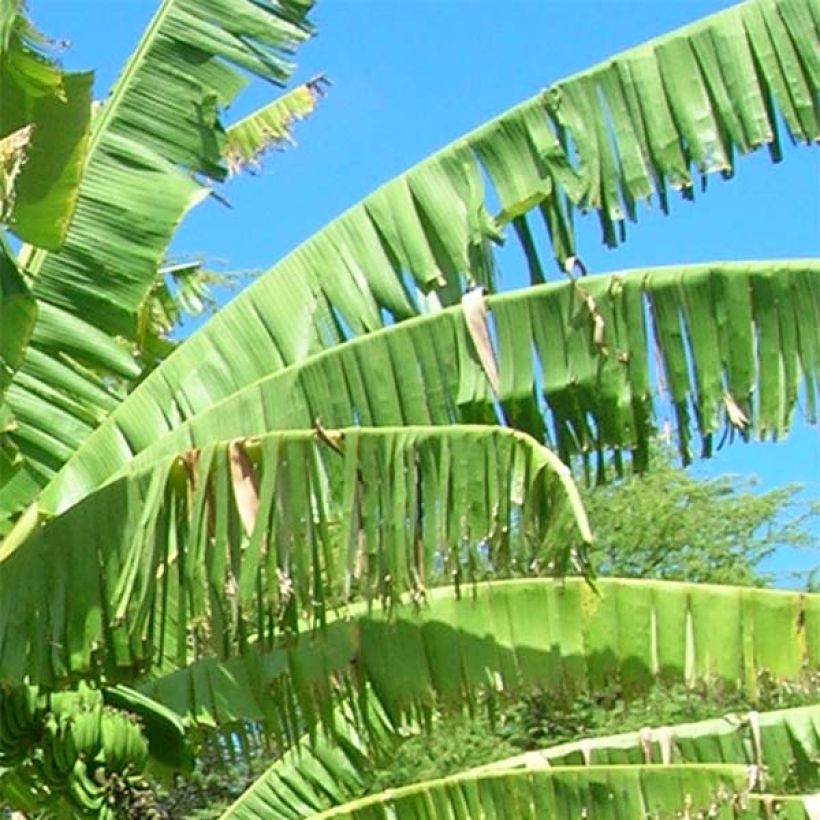

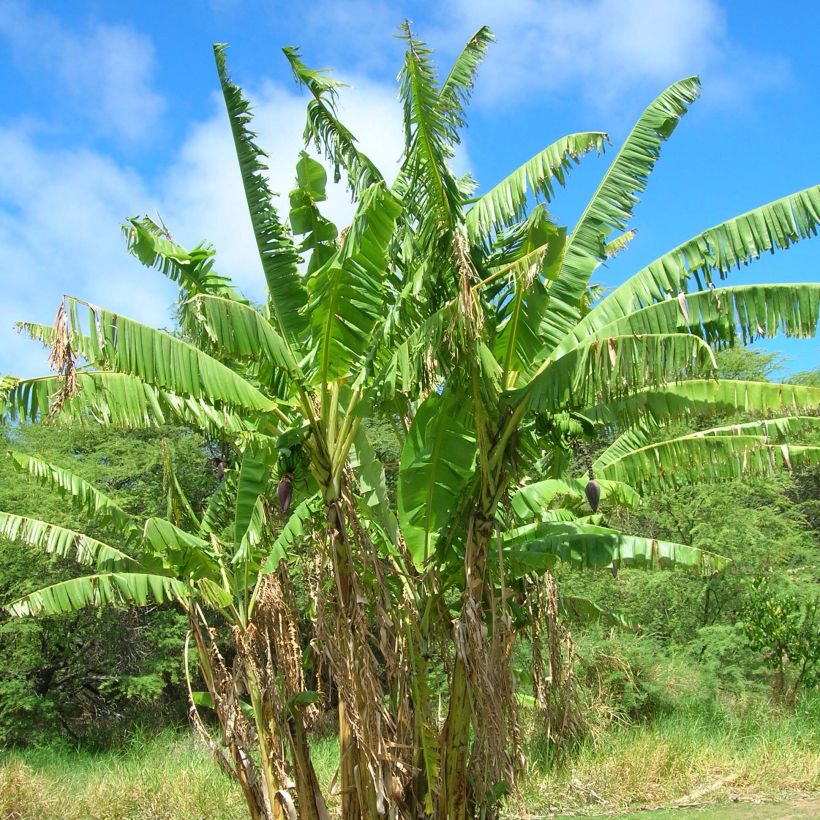

Plant habit
Flowering
Foliage
Botanical data
Musa
itinerans var. xishuangbannaensis
Mekong Giant
Musaceae
Mekong Giant Hardy Banana
China
Other Musa - Banana tree
View all →Planting and care
Plant in spring or summer, in well-tilled, well-drained, humus-rich, fertile, deep, and moist soil. Choose a sunny and sheltered location as the wind can tear the leaves. Soak the root ball in water for a few moments before planting. Dig a hole 3 times the volume of the root ball. Place a layer of gravel at the bottom of the hole to facilitate drainage. Cover with a mixture of garden soil, compost or potting soil, and sand, place the root ball and cover with soil. Firmly tamp down and water generously.
In spring and summer, regularly apply organic fertiliser. Water regularly in summer (about 2 to 3 times a week). It is not very susceptible to diseases and pests.
In winter, cut back the leaves along the trunk and protect the stump by installing a wire mesh filled with dead leaves along the pseudo-trunk. Cover the top with winter protection fabric to prevent excessive moisture. The banana plant will regrow from the base or from the shoots formed around the base (up to 5m (16ft) from the stump for this variety).
Pot cultivation is possible, taking into account the future height of the banana plant. ('Mekong Giant' will reach 8 to 12m (26 to 39ft) in height in the ground, probably less in a pot). Repot approximately every 2 years. Bring the pot indoors before the first frost. Place it in a bright location without direct sunlight. Mist the foliage if necessary or fill a saucer with moist clay pebbles, as this tropical plant appreciates fairly humid environments.
Planting period
Intended location
Care
Planting & care advice
-
, onOrder confirmed
Reply from on Promesse de fleurs
Similar products
Haven't found what you were looking for?
Hardiness is the lowest winter temperature a plant can endure without suffering serious damage or even dying. However, hardiness is affected by location (a sheltered area, such as a patio), protection (winter cover) and soil type (hardiness is improved by well-drained soil).

Photo Sharing Terms & Conditions
In order to encourage gardeners to interact and share their experiences, Promesse de fleurs offers various media enabling content to be uploaded onto its Site - in particular via the ‘Photo sharing’ module.
The User agrees to refrain from:
- Posting any content that is illegal, prejudicial, insulting, racist, inciteful to hatred, revisionist, contrary to public decency, that infringes on privacy or on the privacy rights of third parties, in particular the publicity rights of persons and goods, intellectual property rights, or the right to privacy.
- Submitting content on behalf of a third party;
- Impersonate the identity of a third party and/or publish any personal information about a third party;
In general, the User undertakes to refrain from any unethical behaviour.
All Content (in particular text, comments, files, images, photos, videos, creative works, etc.), which may be subject to property or intellectual property rights, image or other private rights, shall remain the property of the User, subject to the limited rights granted by the terms of the licence granted by Promesse de fleurs as stated below. Users are at liberty to publish or not to publish such Content on the Site, notably via the ‘Photo Sharing’ facility, and accept that this Content shall be made public and freely accessible, notably on the Internet.
Users further acknowledge, undertake to have ,and guarantee that they hold all necessary rights and permissions to publish such material on the Site, in particular with regard to the legislation in force pertaining to any privacy, property, intellectual property, image, or contractual rights, or rights of any other nature. By publishing such Content on the Site, Users acknowledge accepting full liability as publishers of the Content within the meaning of the law, and grant Promesse de fleurs, free of charge, an inclusive, worldwide licence for the said Content for the entire duration of its publication, including all reproduction, representation, up/downloading, displaying, performing, transmission, and storage rights.
Users also grant permission for their name to be linked to the Content and accept that this link may not always be made available.
By engaging in posting material, Users consent to their Content becoming automatically accessible on the Internet, in particular on other sites and/or blogs and/or web pages of the Promesse de fleurs site, including in particular social pages and the Promesse de fleurs catalogue.
Users may secure the removal of entrusted content free of charge by issuing a simple request via our contact form.
The flowering period indicated on our website applies to countries and regions located in USDA zone 8 (France, the United Kingdom, Ireland, the Netherlands, etc.)
It will vary according to where you live:
- In zones 9 to 10 (Italy, Spain, Greece, etc.), flowering will occur about 2 to 4 weeks earlier.
- In zones 6 to 7 (Germany, Poland, Slovenia, and lower mountainous regions), flowering will be delayed by 2 to 3 weeks.
- In zone 5 (Central Europe, Scandinavia), blooming will be delayed by 3 to 5 weeks.
In temperate climates, pruning of spring-flowering shrubs (forsythia, spireas, etc.) should be done just after flowering.
Pruning of summer-flowering shrubs (Indian Lilac, Perovskia, etc.) can be done in winter or spring.
In cold regions as well as with frost-sensitive plants, avoid pruning too early when severe frosts may still occur.
The planting period indicated on our website applies to countries and regions located in USDA zone 8 (France, United Kingdom, Ireland, Netherlands).
It will vary according to where you live:
- In Mediterranean zones (Marseille, Madrid, Milan, etc.), autumn and winter are the best planting periods.
- In continental zones (Strasbourg, Munich, Vienna, etc.), delay planting by 2 to 3 weeks in spring and bring it forward by 2 to 4 weeks in autumn.
- In mountainous regions (the Alps, Pyrenees, Carpathians, etc.), it is best to plant in late spring (May-June) or late summer (August-September).
The harvesting period indicated on our website applies to countries and regions in USDA zone 8 (France, England, Ireland, the Netherlands).
In colder areas (Scandinavia, Poland, Austria...) fruit and vegetable harvests are likely to be delayed by 3-4 weeks.
In warmer areas (Italy, Spain, Greece, etc.), harvesting will probably take place earlier, depending on weather conditions.
The sowing periods indicated on our website apply to countries and regions within USDA Zone 8 (France, UK, Ireland, Netherlands).
In colder areas (Scandinavia, Poland, Austria...), delay any outdoor sowing by 3-4 weeks, or sow under glass.
In warmer climes (Italy, Spain, Greece, etc.), bring outdoor sowing forward by a few weeks.






























